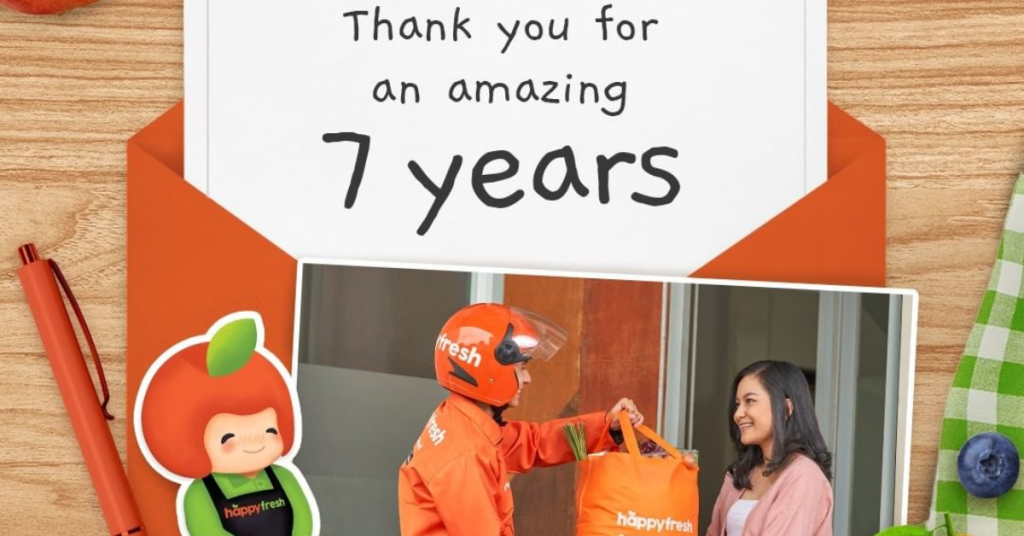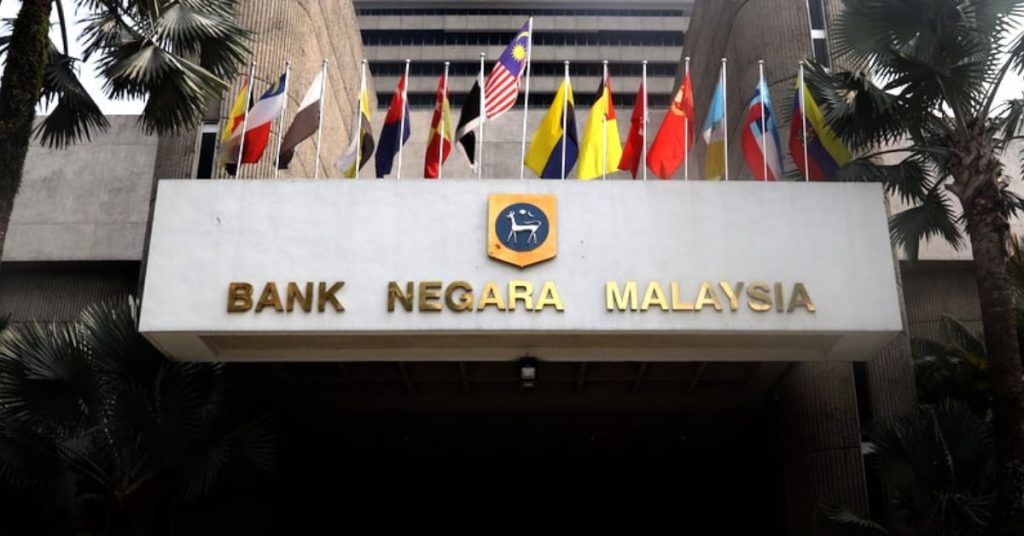Leaders, founders and CEOs: Here’s why Web3 Connect is the event you don’t want to miss

Web3 Connect — in collaboration with co-organisers Polygon and Web3 Alliance.
Web3 Connect was also made possible by RockX, QCP Capital, FOMO Pay, SO-COL, SolanaFM, AVADORE, Airfoil, Headquarters and Ethlas. It also features university partnerships with SMU Blockchain Club, NUS Fintech Society and Blockchain @ NTU.
Top industry leaders at Web3 Connect
Web3 Connect has invited a lineup of speakers from all walks of the industry to share on everything Web3.0. This includes:
- Ella Qiang – Head of Ecosystem & Partnerships, Cronos Labs
- Nicholas Chen – Co-Founder and CEO, SolanaFM
- Marouen Zelleg – Direction, ConsenSys
- Irene Zhao – Co-Founder, SO-COL
and more.
You can check out the full list of speakers and topics here.
A place for builders to connect
Alongside free-flow food and drinks, Web3 Connect will feature themed zones for like-minded individuals to mingle.
Whether you are a retail participant or a CEO, the free-and-easy space will be conducive for fireside chats on anything and everything Web3.0.

While key speakers will be present throughout the event for informative talks, participants are welcome to chill and connect throughout.
With industry leaders present, you are sure to learn something about the industry, regardless of your role in crypto.
Web3 Connect will be hosted from 10am to 7pm on September 26 and 27 at Agrow Building, Singapore 388393.
Sign up for Web3 Connect Nansen, Binance, Solana execs on building crypto firms that can survive bear and bull markets
A timeline of HappyFresh’s tumultuous 7-year journey in M’sia, from launch to closure

For the past seven years, grocery delivery service HappyFresh has had a tumultuous journey, one which has come to an end in Malaysia.
Its rise and ultimate fall have been recorded through numerous articles. But to save you the time of filing through the company’s past records, we’ve compiled a list of HappyFresh’s memorable chapters in Malaysia, organised in a linear narrative.
Birth of a company
HappyFresh was founded in October 2014, modelling itself after Y Combinator alum Instacart, established in California two years prior.
The Indonesian-based company had seven co-founders, each one a seasoned tech player in their own right.

CEO Markus Bihler had years of experience as a private equity investor and had served as CEO of the European company Tirendo.
Benjamin Koellmann was the COO at Lazada group before taking on the same title at HappyFresh.
CTO Fajar Budiprasetyo had a stint in Yahoo! and co-founded two other companies before HappyFresh.
Dr Konstantin Lange served as CFO, with previous experience in The Boston Consulting Group and a PhD in Finance.
Before becoming CCO at HappyFresh, Kai Kux was COO at iMoney Group. Founding investor and executive chairman Tim Marbach had invested in numerous other companies, while Monk’s Hill Venture’s Stefan Jung stepped on as an advisor.
It officially begins
On March 10, 2015, HappyFresh made its official debut after a month or so of being an invite-only platform.
HappyFresh was reported to have an undisclosed “single-digit million US$ pre-round A financing” (seven-digit figure).
Although based in Indonesia, it seems like the app actually started its services in Malaysia first, according to an article by Tech in Asia.
Series A round & regional expansion
In September 2015, HappyFresh raised US$12 million in its Series A round. Led by Vertex Ventures and Sinar Mas Digital Ventures, it also saw participation from Asia Venture Group, BEENEXT, Ardent Capital, 500 Startups (now 500 Global), and Cherry Ventures.
According to a press release then, the on-demand grocery delivery app had successfully expanded to Thailand and Taiwan.
In March 2016, it also made its debut in the Philippines.

Series B & exiting the Philippines & Taiwan
While announcing its Series B funding round, HappyFresh simultaneously withdrew from Taiwan and the Philippines.
The amount raised for HappyFresh’s Series B was undisclosed, but its CEO had reported that the amount was higher compared to its Series A round.
It was Monday (August 29, 2016) when it announced its departure from Taiwan and the Philippines to concentrate on Malaysia, Indonesia, and Thailand.
According to Techcrunch, this news came three days earlier on Friday to a staff of nearly 1,000.

Difficult times & the changing of CEOs
In January 2017, news that HappyFresh’s CEO had changed broke. According to LinkedIn, though, the change from Markus Bilher to Guillem Segarra actually occurred in November 2016.
An article by Tech in Asia reported that “the years 2016 and 2017 were the most difficult for the company”. This period saw HappyFresh going “back to the drawing board” to focus on unit economics, logistics, and new business units.
According to the article, these measures allowed HappyFresh to start seeing positive margins.
Resurgence with Series C
Perhaps thanks to the aforementioned changes, HappyFresh saw a turn for the better in 2019, raising US$20 million for its Series C.
The round was led by the Mirae Asset-Naver Asia Growth Fund, with participation from Line Ventures, Singha Ventures, and also Grab Ventures (the investment arm of Grab).
Returning investors included Vertex Ventures, Sinar Mas Digital Ventures, 500 Startups, and BeeNext.

According to TechCrunch, the fresh funds would be used by HappyFresh to “double down on technology”, which could increase personalisation for customers and provide more efficient logistics.
Pandemic breakthrough & upward growth
As we all know, 2020 was the year of the coronavirus, where everyone became stuck in their own homes. It was a difficult time, one that saw “volatile traffic” on the HappyFresh platform, according to Tech in Asia.
“HappyFresh has been experiencing a 10x to 20x growth across the three countries it operates in as it sees a shift in customers’ behaviour toward online groceries,” reads the Tech in Asia article from 2020 itself.
In those moments of crisis, HappyFresh had served as a lifesaver for Malaysians, Thais, and Indonesians.
Expanding into having its own supermarkets
Earlier this year in July 2022, HappyFresh officially launched its line of cloud warehouses in Malaysia, named HappyFresh Supermarket.

In an interview with Vulcan Post, the company’s chief growth officer, Johan Antlov, shared that the move was for them to build their own paths and have end-to-end control over the whole HappyFresh experience.
Temporary suspension of operations
That experience came to a standstill on September 8, 2022. The HappyFresh app suddenly featured a post saying that all stores on its platforms would be temporarily closed.

This came after an article from Bloomberg that HappyFresh was going through some financial problems, reportedly having hired turnaround firm Alvarez and Marsal to review its accounts.
According to the Bloomberg article, the Jakarta-based company had at least US$97 million (about RM437 million) in debt financing, and some of the company’s senior executives had allegedly stopped handling their day-to-day duties.
HappyFresh Malaysia’s automated response on Facebook at the time shared that the company was underdoing organisational restricting and strategizing to ensure business continuity.
It also shared that HappyFresh’s business operations will be placed on hold temporarily until the company had reached a definitive and sustainable solution.
A short-lived comeback
On September 9, Vulcan Post learnt that the app had silently resumed its operations, at least for that day.
However, the only vendor open for deliveries was HappyFresh Supermarket, and even then, not all warehouse locations were available.

The Vulcan Post team was able to order from the Bangsar location. When asked, the HappyFresh rider who arrived said that he wasn’t sure whether the service would continue the following week.
A funding win
Amidst the financial struggles and board reshuffling, HappyFresh managed to secure undisclosed funding from investors. Announced on September 21, this enabled the company to resume operations in Indonesia.
However, things were still uncertain for its Thailand and Malaysia operations, with Bloomberg reporting that the company was “considering options”.
Bowing out of Malaysia and Thailand
At long last, HappyFresh officially announced its withdrawal from Malaysia and Thailand on September 22. This announcement came via the company’s social media accounts from the two regions.
“It is with a heavy heart that the delivery of this message will be our last delivery to you,” a Facebook post from HappyFresh Malaysia reads.

Thanking its customers for the past seven years, HappyFresh cited the current economic condition as why it was “left with no choice but to cease operations, effective immediately”.
-//-
HappyFresh’s official withdrawal from Malaysia may serve as a signal for the dwindling demand for grocery delivery services now that the country is in the endemic phase.
Still, Malaysians who have been relying on HappyFresh have many other alternatives remaining, some of which we have outlined in another article.
With all of HappyFresh’s original founders having long moved on to other companies, it seems like its customers—at least in Malaysia and Thailand—must, too.
- Read more articles we’ve written about HappyFresh here.
Also Read: Are you a Gen Z creator looking for your next job? Here’s how this platform can help.
“Real value” over profits: How this S’porean turned his ailing cybersecurity firm around

Making a living in Singapore can be tough — many of us face stiff competition for jobs, and even then, the rat race never ends.
For many of us, climbing the corporate ladder to make big bucks and securing a comfortable future for ourselves is a dream. But for most, this dream would remain just that — a dream.
Edmund How, founder of OneSecure, however, walked away from such a position not once, but twice, to start up a business of his own.
Today, the company develops its own cybersecurity products and its clients include local telecommunications companies, small and medium-sized enterprises (SMEs), as well as schools.
Putting his family first
Edmund began his career as an air force regular, which is quite the respectable and stable job. After his retirement from active service, he decided to take on another job that also paid extremely well, at a reputable multinational cybersecurity and networking vendor.
The job came with multiple perks — opportunities for overseas travel, a hefty paycheck, and more.
But the price he had to pay was high as well.
My family and mental health were relegated to the back burner with long hours, and frequent travel meant less time with my family. Working in an MNC is all about chasing numbers and I couldn’t find any satisfaction other than the money. At times, it was a struggle to find the right balance between selling the right products and in achieving the numbers.
– Edmund How, CEO and founder of OneSecure
For a man like Edmund who strongly believes in creating value and delivering solutions, this was not a job that gave him any sense of fulfilment. So after eight years of service, he once again resigned his post and went back to life with his family.
And it turned out, this resignation came at an opportune moment.
Edmund recalled that a friend who ran a software company had acquired an exclusive distributorship for an anti-fraud software and wanted him to run the distributorship. This led to the birth of OneSecure, a subsidiary to distribute the software.

But it was not to be. Just three months after the company’s founding in 2008, Lehman Brothers collapsed, marking the start of the Great Recession.
OneSecure was dragged down as the economic winds turned. In a matter of months, Edmund’s investment into his new company was gone — a hefty US$100 thousand from his personal savings.
With such a large sum of money gone and now without customers to sell to, Edmund made the tough decision to have the company go dormant, in order to cut his own losses.
During this time, his wife became the sole breadwinner of the family, and Edmund took a backseat and spent time with his newborn daughter.
Making a comeback after three years
While this turn had dented his confidence, it had not dented his passion for building his company.
The three years that OneSecure remained dormant provided Edmund valuable time to consider what it was that his company would need once the economy recovered.

During this time, Edmund sought out vendors to speak to, to gain a better understanding of the industry and the products that were available on the market, and what OneSecure could offer that would allow them to break into the market.
In 2011, Edmund finally brought OneSecure back. With the economy on the mend, OneSecure rode the wave to make up for lost time, and Edmund managed to earn back the US$100,000 that he had previously lost.
With the company’s revenue growing at an impressive 50 to 70 per cent every year, investors began to take notice, and OneSecure was finally acquired in 2017. However, this investment partnership soon turned sour.
An investor was supposed to invest and build a team to offer round-the-clock cybersecurity monitoring services. A team of 10 was hired at a monthly cost of S$100,000, but the investor pulled out of the investment.
Not wanting to affect all the staff, I decided to keep the team until they find a job. Therefore, it led to company losing everything we earned over the years.
– Edmund How, CEO and founder of OneSecure
With the company once again in crisis, Edmund threw everything he had to keep the business afloat. At one point, he even resorted to using his own credit card to pay for his employees’ salaries.
Finally, a year later, the investors sold the shares back to him. With full control over the company once again, Edmund decided that change was needed — rather than remaining a distributor of cybersecurity software, OneSecure would develop itself into a Managed Securities Software Provider.
Onwards towards the future

Picking up on the realisation that cyber threats would keep evolving and that companies would be hard-pressed to keep up with new developments themselves, OneSecure would allow companies to offload this burden to them, and put OneSecure in charge of their cybersecurity.
I decided to build it based on providing real value rather than solely on making money. That worked, as we gained customers through references, but we didn’t turn a profit for the first two years as we invested all the money we got to customers to improve our technology.
– Edmund How, CEO and founder of OneSecure
And this investment was the one that finally paid off. Today, the company is trusted by many businesses and consumers — protecting them from ever-evolving cyber threats, and serving over 100 companies across Asia.
Throughout all the challenges that the company faced, Edmund believed in his vision, that he could build a company that provided real value to customers.
We have remained focused on providing quality cybersecurity monitoring solutions and I don’t foresee that we will change much. We might explore helping customers build secured cyber infrastructure when we have the right team to do it.
– Edmund How, CEO and founder of OneSecure
In addition, the company has also consistently pursued partnerships with other companies in order to add to its suite of services. Their most recent partnership was a mere three months ago — it partnered with Radware to offer additional protection against DDoS attacks, among others.
Currently, the company has offices in Malaysia and Indonesia, with headquarters in Singapore. With the success that the company is seeing, Edmund is already planning for the next steps of the company’s regional expansion, this time to Thailand and the Philippines, which could take place later this year.
Oftentimes, we hear of entrepreneurs’ success stories — of how they invested a small sum to see huge returns. Seldom do we hear the flip side of this success — of sacrifice and perseverance in the face of seemingly endless failure and challenges.
Yet, Edmund’s story reflects just this. A story of a Singaporean, turning his back from the corporate life, in order to build something that could create real value for consumers, which is indeed something that an increasingly digitised Singapore needs.
Featured Image Credit: OneSecure Asia
Also Read: Shop, own, dispose: This S’porean built an app that makes buying consumer electronics ‘ximple’
[WATCH] We tested a lesser-known feature in the OPPO Enco Buds2, here’s how it went

Recently, our team’s video producer, Matt got his hands on the OPPO Enco Buds2.
It has a stereo sound system that leans a little more toward a bass-heavy output, perfect for bass lovers. Battery-wise, it can last for up to 28 hours of listening time.
What makes this an exciting pair of true-wireless earbuds for someone that captures plenty of photos is that there’s a feature on the buds to toggle with your phone’s camera hands-free.

So, Matt took it out for a spin over the weekend to test how it performed.
Tap to snap
To trigger a phone’s camera control’s on the OPPO Enco Buds2, you’ll simply need to tap twice on either the left or right earbud.

Getting the hang of it may take a couple of tries, at least in Matt’s case, but it eventually worked out.
While at an animanga event, there were several instances where the introverted Matt wanted to snap a photo of himself without the help of a stranger.

With the earbuds’ double-tap feature, he could simply place his phone against a nearby shelf, tap twice on an earbud, pose, and take a shot. It goes without saying that using this feature can save you the rush of setting up a timer and running back to position.
Tap to film
The unedited dance videos you take of yourself for TikTok would usually start off with an awkward walk into position, after hitting record on your camera.
Using the OPPO Enco Buds2, the double-tap function also works for videos so you can get into the frame before recording.

It’s a function that works great with vlogs too, though be aware of the slight delay that comes from the latency of certain Bluetooth devices.
-//-
While the double-tap feature on the OPPO Enco Buds2 can be a nice perk to have, it’s worth noting that it only works on devices in the OPPO ecosystem.
But for RM129, the pair of earbuds can make for a budget option if you’re looking for good sound quality with a deep bass.
Watch the OPPO Enco Buds2’s double-tap function in action here:
Also Read: Are you a Gen Z creator looking for your next job? Here’s how this platform can help.
What M’sian BNPL regulations may look like & how they’ll impact providers, merchants & users

Naturally, the continual relevance of buy now, pay later services in Malaysia and across the globe has attracted some scrutiny.
And not only is this scrutiny coming from financial bloggers and the media, but it’s also coming from regulators.
Many countries have started to realise the need to rein in BNPL companies, which, since their inception, have virtually bypassed credit laws.
This is true in Malaysia, where BNPL schemes offered by non-bank operators actually do not fall within the regulatory purview of Bank Negara Malaysia (BNM) or any regulatory agency, according to BNM’s 2021 Annual Report released in March this year.
In the UK, plans for BNPL regulations have already been in talks since early 2021 as a conclusion of the Woolard Review, which was set up to look at the unsecured credit market.
According to American law firm Skadden, the review highlighted the potential for consumer detriment due to inappropriate promotion of BNPL, poor consumer understanding, lack of affordability assessments and visibility of these products on credit files, and inconsistent treatment of customers in financial difficulty.
Malaysia will likely follow suit in taking action, with Bank Negara Malaysia having said in March 2022 that it would work with the Ministry of Finance and Securities Commission Malaysia to enact the Consumer Credit Act this year.
But with three months left in the year, the act has still not taken effect. So, when will regulations actually be implemented, and is it actually as dire for BNPL services as it seems?
Why it matters
Some might still be wondering what the big deal is with BNPL and regulations.
The main issue with BNPL services is the fact that they don’t have to report to any regulatory agency. Like what the Woolard Review outlined, there are no guidelines on how these schemes are promoted.
Previously, we interviewed financial bloggers about how to use BNPL responsibly. A number of them actually expressed that BNPL can be dangerous.

This is because BNPL allows users that do not have access to loans or credits to spend beyond their means, which can lead to a culture of debt.
According to an article by The Edge, BNM said that while BNPL schemes allow customers to make payments in instalments with zero interest, there may be other charges levied by BNPL providers on the customers through processing fees and late-payment fees.
Granted, some claim to not have any hidden, processing, or late-payment fees, but this does not apply to every BNPL service provider, as we found in our review of four major players in Malaysia.
With credit cards, there are a lot of laws in place to ensure that consumers are protected and providers of consumer credit are doing so responsibly.
Due to this, BNPL is more accessible, which has pros and cons. This is as certain credit activities may target consumers who are vulnerable and less financially savvy.
Who are the regulators & regulatees
As mentioned, the proposed Consumer Credit Act (CCA) has been worked on by BNM, Ministry of Finance, and Securities Commission Malaysia.
A public consultation paper regarding the proposed CCA has also been written by the Consumer Credit Oversight Board (CCOB) Task Force in collaboration with the three aforementioned institutions.
The CCOB is an independent competent authority for consumer credit that will be formally established once the CCA is enacted. The CCOB complements the oversight role of existing ministries and agencies.
The article also shared that BNM expects BNPL schemes offered by or in partnership with banking institutions to already be observing practices consistent with responsible lending expectations.
Those who might be affected the most by the CCA would be non-bank BNPL players in Malaysia including Atome, ShopBack PayLater, Split, myIOU, FavePay, PayLater by Grab, and SPayLater.
It’s important to note, though, that the CCA will regulate companies providing credit services to individuals as well as micro and small enterprises (MSEs). This includes not only BNPL companies but factoring companies, leasing companies, impaired-loan buyers, debt collection agencies, and more.
What’s going to happen?
To understand what the CCA might do, here are its objectives:
- To establish an authorisation framework for non-bank entities carrying on the business of providing credit and credit services;
- To provide a comprehensive and consistent framework for credit consumer protection through the imposition of minimum standards of conduct on credit providers and credit service providers;
- To establish effective surveillance, supervision, and enforcement framework to deter and reprimand unfair, unethical, and predatory practices; and
- To ensure effective coordination among the Regulatory and Supervisory Authorities in delivering better consumer outcomes through the formation of a high-level Council for Consumer Credit Malaysia.

But objectives aside, how are consumers actually going to be affected?
Basically, one key thing is that the CCA will require credit providers to observe responsible lending standards such as performing credit checks and affordability assessments. This will make BNPL services a little less accessible.
The act will also promote clear, accurate, consistent, and timely disclosures of information to credit consumers for decision-making, so perhaps BNPL services will have to include a lot more disclaimers now.
On top of that is prohibiting practices that are “inherently unfair to credit consumers”, such as engaging in deceptive conduct to mislead or adopting abusive practices to intimidate borrowers when pursuing debt collections.
Key areas of consumer protection under the CCA will include prohibited business conduct, advertisement and solicitation, credit agreement, financing charges, credit assessment, debt collection and repossession of goods, and relief from financial hardship.
When will it take effect?
The CCA is expected to run from 2023 to 2024 in Phase 1 of the CCOB’s transformation of the consumer credit regulatory landscape.
Perhaps BNPL companies will be given a grace period before having to comply. Maybe they’re already preparing for it.
Point is, regulations are definitely coming. But what’s uncertain is whether the ever-so-attractive BNPL schemes will take a hit because of it.
It seems like the general consensus is that these regulations will be a threat to the industry’s growth. Plus, merchants and retailers that are popular through BNPL providers might lose out on some sales.
Consumption might also fall due to the increased difficulty of accessing credit. Those who are unbanked or underbanked will likely feel the effects the hardest.
But maybe that’s for the betterment of the economy, especially in the long run.
According to an article by Forbes, regulation could even benefit the BNPL players. This is because the regulatory scrutiny could benefit BNPL companies’ reputation, even bringing them to the same playing field as big banks. I believe then that investors might find BNPL companies more appealing, too.
However, I think the increased regulation might serve as an obstacle for smaller BNPL startups new to the scene, thus reducing competition.
- Read other articles we’ve written about BNPL here.
Also Read: Are you a Gen Z creator looking for your next job? Here’s how this platform can help.
Featured Image Credit: Bank Negara Malaysia